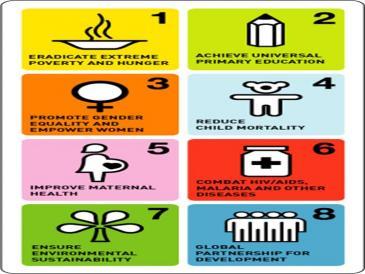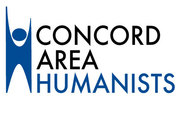Posted on July 11, 2014 by David

As Humanists, we are often quick to point out the need for humanitarian aid. We should be just as quick to be knowledgeable about the efforts of humanitarian aid. The United Nation’s Millennium Development Goals are a set of goals set by the UN in the year 2000 and set to expire next year, in 2015. The progress towards these goals has been phenomenal. Few people realize that extreme poverty was cut in half by the year 2010 – 5 years ahead of schedule. Few people are aware of the other goals which have already been reached. And few people are aware of the goals that are not on track to be met.
This is one of the last “scorecards” of the MDGs as the MDGs will be phased into the Sustainability Development Goals for the years 2015 and Beyond. It is refreshing to hear of what has been done rather the constant din and roar of what needs to be done. This work in the civil sector has been accomplished through the collaborative efforts of over 25,000 Non Government Organization (NGOs), some governments, and some organizations in the business sector.
The bullets below are shown here to give an overview of the “scorecard” for the Millennium Development Goals (MDGs). For more detailed information, read the accompanying paragraphs below. For charts and data by global sectors for even further details, view the full report at the following web site:
The United Nations Millennium Development Goals Report for 2014
SEVERAL MDG TARGETS HAVE BEEN MET
The world has reduced extreme poverty by half
Efforts in the fight against malaria and tuberculosis have shown results
Access to an improved drinking water source became a reality for 2.3 Billion people
Disparities in primary school enrolment between boys and girls are being eliminated in all developing regions.
The political participation of women has continued to increase
Development assistance rebounded, the trading system stayed favorable for developing countries and their debt burden remained low
SUBSTANTIAL PROGRESS HAS BEEN MADE IN MOST AREAS, BUT MUCH MORE EFFORT IS NEEDED TO REACH THE SET TARGETS
Major trends that threaten environmental sustainability continue, but examples of successful global action exists
Hunger continues to decline, but immediate additional efforts are needed to reach the MDG target
Chronic undernutrition among young children declined, but one in four children is still affected
Child mortality has been almost halved, but more progress is needed
Much more needs to be done to reduce maternal mortality
Antiretroviral therapy is saving lives and must be expanded further
Over a quarter of the world’s population has gained access to improved sanitation since 1990, yet a Billion people still resorted to open defacation
90 per cent of children in developing regions are attending primary school
SEVERAL MDG TARGETS HAVE BEEN MET
The world has reduced extreme poverty by half
In 1990 almost half of the population in developing regions lived on less than $1.25 a day. This rate dropped to 22 per cent by 2010, reducing the number of people living in extreme poverty by 700 million.
Efforts in the fight against malaria and tuberculosis have shown results
Between 2000 and 2012, an estimated 3.3 million deaths from malaria were averted due to the substantial expansion of malaria interventions. About 90 per cent of those averted deaths – 3 Million – were children under the age of five living in sub-Saharan Africa. The intensive efforts to fight tuberculosis have saved an estimated 22 Million lives worldwide since 1995. If the trends continue, the world will reach the MDG targets on malaria and tuberculosis.
Access to an improved drinking water source became a reality for 2.3 Billion people
The target of halving the proportion of people without access to an improved drinking water source was achieved in 2010, five years ahead of schedule. In 2012, 89 per cent of the world’s population had access to an improved source, up from 76 per cent in 1990. Over 2.3 Billion people gained access to an improved source of drinking water between 1990 and 2012.
Disparities in primary school enrolment between boys and girls are being eliminated in all developing regions.
Substantial gains have been made towards reaching gender parity in school enrolment at all levels of education in all developing regions. [Note: This is “developing regions” and not “Least Developed Countires”] By 2012, all developing regions have achieved, or were close to achieving, gender parity in primary education.
The political participation of women has continued to increase
In January 2014, 46 countries boasted having more than 30 per cent female members of parliament in at least one chamber. More women are now holding some of the so-called “hard” ministerial portfolios – such as Defense, Foreign Affairs, and the Environment.
Development assistance rebounded, the trading system stayed favorable for developing countries and their debt burden remained low
Official development assistance stood at $134.8 Billion in 2013, the highest level ever recorded, after two years of declining volumes. However, aid is shifting away from the poorest countries. 80 per cent of imports from developing countries entered developed countries duty-free and tariffs remained at an all-time low. The debt burden of developing countries remained stable at about 3 per cent of export revenue.
SUBSTANTIAL PROGRESS HAS BEEN MADE IN MOST AREAS, BUT MUCH MORE EFFORT IS NEEDED TO REACH THE SET TARGETS
Major trends that threaten environmental sustainability continue, but examples of successful global action exists
Global emissions of carbon dioxide (CO2) continued their upward trend and those in 2011 were almost 50 per cent above their 1990 level. Millions of hectares of forest are lost every year, many species are being driven closer to extinction and renewable water resources are becoming scarcer. At the same time, international action is on the verge of eliminating ozone-depleting substances and the proportion of terrestrial and coastal marine areas under protection has been increasing.
Hunger continues to decline, but immediate additional efforts are needed to reach the MDG target
The proportion of undernourished people in developing regions has decreased from 24 per cent in 1990 – 1992 to 14 per cent in 2011 – 2013. However, progress has slowed down in the past decade. Meeting the target of halving the percentage of people suffering from hunger by 2015 will require immediate additional effort, especially in countries which have made little headway.
Chronic undernutrition among young children declined, but one in four children is still affected
In 2012, a quarter of all children under the age of five years were estimated to be stunted – having inadequate height for their age. This represents a significant decline since 1990 when 40 per cent of young children were stunted. However, it is unacceptable that 162 Million young children are still suffering from chronic undernutrition.
Child mortality has been almost halved, but more progress is needed
Worldwide, the mortality rate for children under age five dropped almost 50 per cent, from 90 deaths per 1,000 live births in 1990 to 48 in 2012. Preventable diseases are the main causes of under-five deaths and appropriate actions need to be taken to address them.
Much more needs to be done to reduce maternal mortality
Globally, the maternal mortality ratio dropped by 45 per cent between 1990 and 2013, from 380 to 210 deaths per 100,000 live births. Worldwide, almost 300,000 women died in 2013 from causes related to pregnancy and childbirth. Maternal death is mostly preventable and much more needs to be done to provide care to pregnant women.
Antiretroviral therapy is saving lives and must be expanded further
Access to antiretroviral therapy (ART) for HIV-infected people has been increasing dramatically, with a total of 9.5 Million people in developing regions receiving treatment in 2012. ART has saved 6.6 Million lives since 1995. Expanding its coverage can save many more. In addition, knowledge about HIV among youth needs to be improved to stop the spread of the disease.
Over a quarter of the world’s population has gained access to improved sanitation since 1990, yet a Billion people still resorted to open defacation
Between 1990 and 2012, almost 2 Billion people gained access to an improved sanitation facility. However, in 2012, 2.5 Billion people did not use an improved sanitation facility and 1 Billion people still resorted to open defecation, which poses a huge risk to communities that are often poor and vulnerable already. Much greater effort and investment will be needed to redress inadequate sanitation in the coming years.
90 per cent of children in developing regions are attending primary school
The school enrolment rate in primary education in developing regions increased from 83 per cent to 90 per cent between 2000 and 2012. Most of the gains were achieved by 2007, after which progress stagnated. In 2012, 58 Million children were out of school. High dropout rates remain a major impediment to universal primary education. And estimated 50 per cent of out-of-school children of primary school age live in conflict-affected areas.
David Kimball


Add your comment